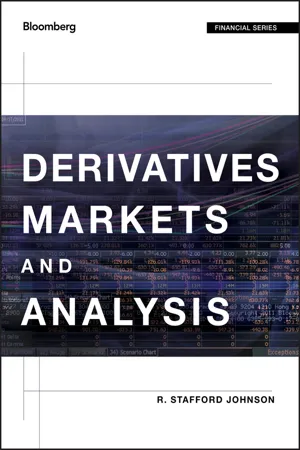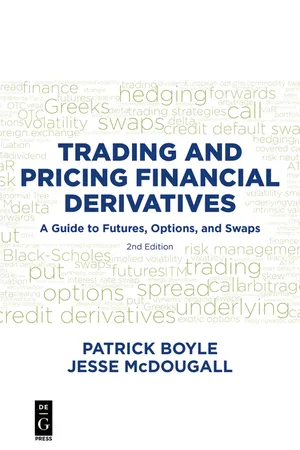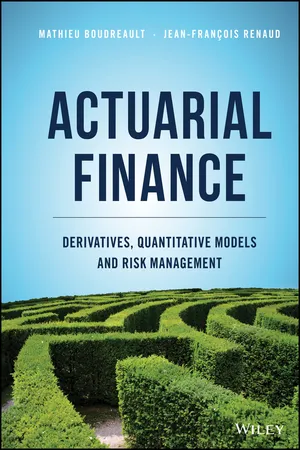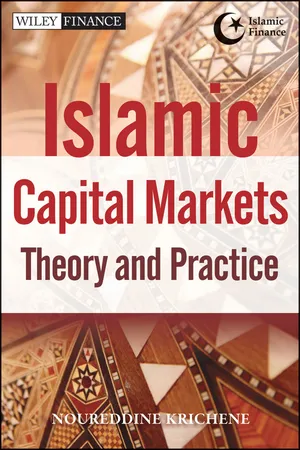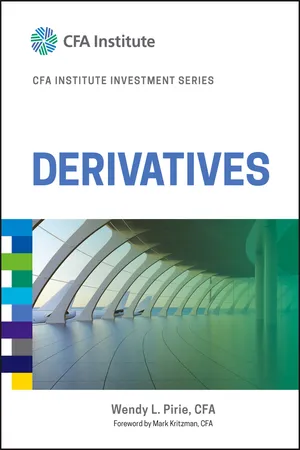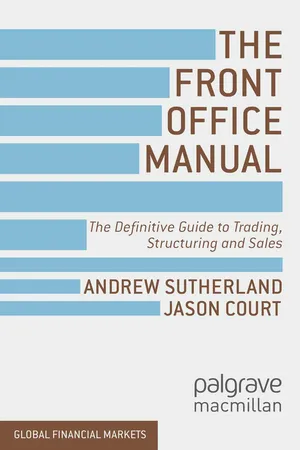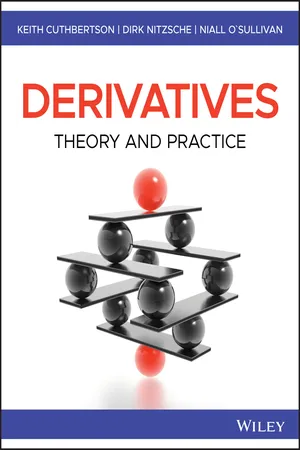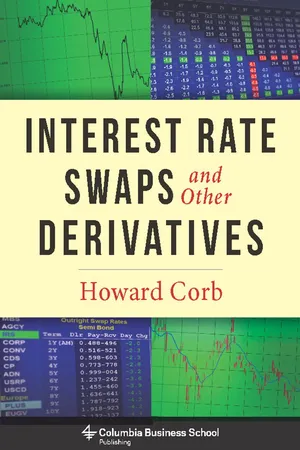Business
Interest Rate Swaps
Interest rate swaps are financial agreements between two parties to exchange interest rate payments. They are used to manage or hedge against interest rate risk. In a typical interest rate swap, one party pays a fixed interest rate while the other pays a floating interest rate, allowing both parties to benefit from their respective advantages in the market.
Written by Perlego with AI-assistance
Related key terms
12 Key excerpts on "Interest Rate Swaps"
- eBook - ePub
An Introduction to International Capital Markets
Products, Strategies, Participants
- Andrew M. Chisholm(Author)
- 2009(Publication Date)
- Wiley(Publisher)
13 Interest Rate Swaps13.1 CHAPTER OVERVIEW
This chapter explores one of the fundamental tools of the modern capital markets, the interest rate swap (IRS). A standard or ‘plain’ vanilla IRS is an agreement between two parties to exchange cash flows on regular payment dates. One leg is based on a fixed rate of interest and the return leg on a variable or floating rate of interest. The chapter considers how payments on the swap are calculated. It looks at the trading and hedging applications for corporate borrowers and institutional investors. Nowadays the market for swaps is extremely competitive and dealers working for major banks stand ready to quote two-way prices in a wide variety of currencies for a range of maturities (up to 30 years and beyond) and for a range of payment frequencies. The chapter discusses swap spreads which measure the relationship between the fixed rates on swaps and the returns on benchmark government securities. Spreads are affected by credit risk considerations, by liquidity, and also by supply and demand factors. Many issuers of fixed coupon bonds use swaps to switch their liabilities to a floating rate basis. The chapter considers why this is so and where the benefits lie. The final topic is cross-currency swaps, in which payments are made in two different currencies. The Appendix lists non-standard swap varieties.13.2 SWAP DEFINITIONS
In the most general terms a swap is a contract between two parties:• agreeing to exchange cash flows; • on regular dates; • where the two payment legs are calculated on a different basis.A swap is a bilateral over-the-counter agreement directly negotiated between two parties, at least one of which is normally a bank or other financial institution. Once made, the contract cannot be freely traded. On the other hand, it can be tailored to meet the needs of a particular counterparty. As with other OTC derivatives there is a potential credit risk - the risk that the other party might default on its obligations. To counter this, collateral is normally exchanged. - eBook - ePub
- R. Stafford Johnson(Author)
- 2017(Publication Date)
- Bloomberg Press(Publisher)
PART 4 Financial SwapsPassage contains an image
CHAPTER 14 Interest Rate Swaps
A swap, by definition, is a legal arrangement between two parties to exchange specific payments. There are three types of financial swaps:- Interest Rate Swaps: The exchange of fixed‐rate payments for floating‐rate payments
- Credit default swaps: the exchange of premium payments for default protection
- Currency swaps: The exchange of liabilities in different currencies
In this chapter, we examine the markets, uses, and pricing of standard Interest Rate Swaps and two interest rate swap derivatives—forward swaps and swaptions. In Chapter 15 , we examine the markets, uses, and pricing of credit default swaps and currency swaps.Generic Interest Rate Swaps
The simplest type of interest rate swap is the plain vanilla swap or generic swap. In this agreement, one party provides fixed‐rate interest payments to another party who provides floating‐rate payments. The parties to the agreement are counterparties. The party who pays fixed interest and receives floating is the fixed‐rate payer; the other party (who pays floating and receives fixed) is the floating‐rate payer.On a generic swap, principal payments are not exchanged. As a result, the interest payments are based on a notional principal (NP).The interest rate paid by the fixed payer often is specified in terms of the yield to maturity (YTM) on a T‐note plus basis points; the rate paid by the floating payer on a generic swap is the LIBOR. Swap payments on a generic swap are semiannual and the maturities typically range from 3 to 10 years. In the swap contract, a trade date, effective date, settlement date, and maturity date are specified. The trade date is the date the parties agree to commit to the swap; the effective date is the date when interest begins to accrue; the settlement or payment date is when interest payments are made (interest is paid in arrears six months after the effective date); and the maturity date is the last payment date. On the payment date, only the interest differential between the counterparties is paid. That is, generic swap payments are based on a net settlement basis: The counterparty owing the greater amount pays the difference between what is owed and what is received. Thus, if a fixed‐rate payer owes $3 million and a floating‐rate payer owes $2.5 million, then only a $0.5 million payment by the fixed payer to the floating payer is made. All of the terms of the swap are specified in a legal agreement signed by both parties called the confirmation. The drafting of the confirmation often follows document forms suggested by the International Swap and Derivative Association - eBook - ePub
Bond Math
The Theory Behind the Formulas
- Donald J. Smith(Author)
- 2014(Publication Date)
- Bloomberg Press(Publisher)
CHAPTER 8 Interest Rate Swaps The unprecedented interest rate volatility in the United States in the 1970s and 1980s created demand for risk management products and strategies. Swaps emerged from that time period and since then have become the primary derivative contract used in practice to hedge interest rate risk. There are some actively traded fixed-income and interest rate futures contracts, in particular, on Treasury notes and bonds and on 3-month LIBOR, but swaps have come to dominate because of their flexibility and operational ease for many end users. End users are those entities (including financial institutions, investment funds, companies, universities, and state and local governments) that either want or need an interest rate derivative. It’s surely a vast simplification, but I like to think that those who want derivatives essentially are speculating on rates and those who need them are hedging risk exposures. In reality, decisions regarding risk management often are a play between those two motivations, sometimes called strategic hedging. Interest Rate Swaps are also a great product to illustrate bond math techniques. We focus on swap valuation in this chapter. The traditional method is called LIBOR discounting. Later in the chapter we see how the financial crisis of 2007 to 2009 has led to some significant changes in derivatives valuation and what is called OIS discounting. To start, I use basic bond math to show that a standard (or plain vanilla) fixed-for-floating swap can be priced initially and valued later using the implied spot and forward curves corresponding to the reference rate, that is, LIBOR. “Pricing” here means determining the fixed rate at issuance. Typically, it is set so that the initial value of the swap is zero to each of the two counterparties to the contract. Subsequently, as time passes and swap market rates change, the swap will take on positive value to one of the parties and an equal but negative value to the other - eBook - ePub
Trading and Pricing Financial Derivatives
A Guide to Futures, Options, and Swaps
- Patrick Boyle, Jesse McDougall(Authors)
- 2018(Publication Date)
- De|G Press(Publisher)
Speculators: Swaps give fixed-income traders a way to speculate on movements in interest rates while reducing the cost of long and short positions in Treasuries. Instead of buying a Treasury bond to speculate on a fall in interest rates, a trader could “receive” fixed in a swap, which gives a similar payoff should rates fall, but does not require the investor to put up as much capital.Portfolio managers: Interest Rate Swaps give fixed-income portfolio managers the ability to quickly add or reduce the duration of their portfolio. They give portfolio managers a way of adjusting interest rate exposure and offsetting the risks posed by interest rate volatility. Long-dated Interest Rate Swaps can be an effective tool in liability driven investing , allowing portfolio managers to increase the duration of a portfolio, where the aim is to match the duration of assets with that of long-term liabilities.Risk managers: Financial institutions are usually involved in a huge number of transactions involving loans, derivatives contracts, and other investments all of which can expose the institution to interest rate risk. This risk can be managed using swaps.Bond issuers: When corporations decide to issue bonds, they usually lock in an interest rate by entering into swap contracts. That gives them time to go out and find investors for the bonds. Once the bonds are sold, they can exit the swap contracts. The swap contracts will have hedged the interest rate risk between the sales pitch for the bonds and the actual sale.The Importance of Swaps in Markets
Currency swaps originated in the late 1970s when foreign exchange traders entered these agreements to work around British controls on the movement of foreign currency. The first interest rate swap was negotiated in 1981 between the World Bank and IBM. IBM at that time had large amounts of Swiss franc and German deutschemark debt. IBM and the World Bank worked out an arrangement in which the World Bank borrowed dollars in the US market and swapped the dollar payment obligation to IBM in exchange for taking over IBM’s Swiss franc and deutschemark obligations. The swap market has grown immensely since then, the notional dollar value of outstanding Interest Rate Swaps globally was $318 trillion at the end of 2017, according to the Bank for International Settlements. - eBook - ePub
Actuarial Finance
Derivatives, Quantitative Models and Risk Management
- Mathieu Boudreault, Jean-François Renaud(Authors)
- 2019(Publication Date)
- Wiley(Publisher)
Commodity swap: delivery of a commodity (whose price varies) at different dates, in exchange for a fixed periodic payment.Interest Rate Swaps are by far the most popular swaps used by insurance companies to manage interest rate risk: 83% of all swaps are used to manage this risk only (see Table 4.1 ). In the entire OTC swap market, the amount of notional outstanding in interest swaps is about 400 trillion dollars (see Table 2.2).The most popular types of swaps include the above-mentioned, as well as equity swaps, which is an exchange of payments based on the returns of a stock (or stock index) for payments based on an interest rate, and total return swaps, which is an exchange of an interest rate (fixed or floating) for the total return of a bond (including default).Minor variations on standard swaps are prepaid swaps and deferred swaps. A prepaid swap is a regular swap whose fixed leg is paid as an up-front premium at inception, while a deferred swap is issued today but payments are exchanged later at a predetermined date.4.2 Interest Rate Swaps
In an interest rate swap, parties exchange a variable interest rate, applied to a given amount, in exchange for a fixed interest rate, applied on the same amount. This amount on which the payments are calculated is known as the notional (principal, par value, face value). The swaps of payments occur at predetermined dates for a given period of time. Typically, payments are exchanged quarterly or semi-annually and Interest Rate Swaps usually last from 2 to 15 years. Because their cash flows are similar, we will use the words loans and bonds interchangeably.4.2.1 Fixed-rate and floating-rate loans
A fixed-rate loan is simple: the borrower receives the principal F at inception in exchange for future periodic interest payments of size c. The principal is repaid at maturity. No matter how the term structure of interest rates evolves over time, i.e. if it increases or decreases, all interest payments will be of size c - eBook - ePub
The Capital Markets
Evolution of the Financial Ecosystem
- Gary Strumeyer(Author)
- 2017(Publication Date)
- Wiley(Publisher)
CHAPTER 29 Interest Rate Swaps Amir SadrThe interest rate derivatives market (swaps, options) is the largest segment of the global over‐the‐counter (OTC) derivatives market consisting of contracts on foreign exchange, interest rates, equity, commodity, and credit default swaps. According to the Bank for International Settlements (BIS), as of June 2015, interest rate contracts comprised $434 trillion (78%) of the notional amounts outstanding, or $11 trillion (71%) of gross market value. Of these contracts 90% were swaps—almost all plain‐vanilla swaps—and FRAs, and 10% options. Comparing the gross market value of swaps to the $12.7 trillion of U.S. Treasury outstanding debt should drive home the significance and size of this market.In the United States, almost every major financial institution and corporation uses Interest Rate Swaps. Commercial banks can use swaps to match the duration of their assets (long‐term fixed‐rate loans) to their liabilities (short‐rate deposits, CDs). Agencies use swaps and swap derivatives to fine‐tune and hedge the duration of their mortgage portfolios in response to expected or realized prepayments, and for funding. Corporates usually follow a debt issuance (typically fixed‐rate bonds) by swapping these to floating rates at opportune times (steep yield curves). Finally, speculators such as hedge funds and proprietary trading desks use swaps to express views or take advantage of level/slope/curvature of interest rate curves.Traditionally, swaps and derivatives have been privately negotiated, bilateral, principal‐to‐principal contracts between two counterparties with maximum flexibility in the details (start date, maturity date, payment frequency, floating index,…) of the contract. Despite this flexibility, most swaps have standardized terms, with only the notional, maturity and the fixed rate being negotiated at trade time. Since the 2007–2008 financial crisis and passage of Dodd‐Frank Law, the impetus has been to centrally clear standard swaps by having a Central Counterparty (CCP) become the intermediate counterparty to all original counterparties. As of this writing, more than 75% of swaps are centrally cleared, and this allows for netting and mitigation of credit risk inherent in swaps, and avoids the domino effect of one counterparty's default, since the CCP requires initial and daily variation margin from its swap counterparties. Moreover, there is a strong push by SEC and CFTC to execute swaps on a Swap Execution Facility (SEF) which is an electronic trading platform providing bid and offer information to end‐users. This has helped to move swaps to a regulated, transparent, and commoditized market. - eBook - ePub
Islamic Capital Markets
Theory and Practice
- Noureddine Krichene(Author)
- 2012(Publication Date)
- Wiley(Publisher)
Table 12.5 , we have the LIBOR futures rates. We use these rates to compute the price of zero-coupon sukuks. We apply these prices to compute the present value of end-period floating payments. This gives the numerator for the swap rate formula. To compute the denominator, we take the sum of the prices of zero-coupon sukuks. The swap rate is computed at 4.6 percent per year.TABLE 12.5 Computation of the Swap Rate Using LIBOR Futures RateCURRENCY SWAPS
In this section, we provide a definition and examples of currency swaps; we explain the motivation for currency swaps; and describe the benefits as well as the drawbacks of currency swaps.Definition and Examples of Currency Swaps
Currency swaps are a natural extension of interest-rate swaps. The interest-rate swap market is described as an exchange of cash flows predicated on two different preset interest-rate indices for a prescribed schedule of payments. Interest-rate swaps are in the same currency. Now, we can introduce currency swaps; the latter are interest-rate swaps in different currencies involving the exchange of principal amounts at inception and at maturity.A currency swap is an agreement between two parties to exchange the principal loan amount and interest payments applicable on it in one currency with the principal and interest payments on an equal loan in another currency. These contracts are valid for a specific period, which could range up to 10 years, and are typically used to exchange fixed-rate interest payments for floating-rate payments on dates specified by the two parties. Since the exchange of payment takes place in two different currencies, the prevailing spot rate is used to calculate the payment amount. This financial instrument is used to hedge interest and exchange rates risks.In an interest rate swap, we were concerned exclusively with the exchange of cash flows relating to the interest payments on the designated notional amount. However, there was no exchange of notional principal at the inception of the contract. The notional amount was the same for both sides of the currency and it was delineated in the same currency. Principal exchange is redundant. However, in the case of a currency swap, principal exchange is not redundant. The exchange of principal on the notional amounts is done at market rates, often using the same rate for the transfer at inception as is employed at maturity. The interest payments may be: - eBook - ePub
- R. Stafford Johnson(Author)
- 2010(Publication Date)
- Wiley(Publisher)
Journal of Derivatives 4, no. 4 (Summer 1997): 67-79.Sun, T., S. Sundaresan, and C. Wang. “Interest Rate Swaps: An Empirical Investigation.” Journal of Financial Economics 36 (1993): 77-99.Titman, S. “Interest Rate Swaps and Corporate Financing Choices.” Journal of Finance, 47, no. 4 (1992): 1503-16.Turnbull, S. M. “Swaps: A Zero Sum Game.” Financial Management 16, no. 1 (Spring 1987): 15-21.Wall, L. D., and J. J. Pringle. “Alternative Explanations of Interest Rate Swaps: A Theoretical and Empirical Analysis.” Financial Management 18, no. 2 (Summer 1989): 59-73.Passage contains an image
CHAPTER 21Swap Derivatives: Forward Swaps and Swaptions21.1 INTRODUCTION
Today, there are a number of nonstandard or nongeneric swaps used by financial and nonfinancial corporations to manage their varied cash flow and return-risk positions. Two of the most widely used nongeneric swaps are the forward swap and options on swaps or swaptions. A forward swap is an agreement to enter into a swap that starts at a future date at an interest rate agreed upon today. A swaption, in turn, is a right, but not an obligation, to take a position on a swap at a specific swap rate. In this chapter, we examine these two interest rate swap derivatives.21.2 FORWARD SWAPS
Like futures contracts on debt securities, forward swaps provide borrowers and investors with a tool for locking in a future interest rate. As such, they can be used to manage interest rate risk for fixed-income positions.Hedging a Future Loan with a Forward Swap
Financial and nonfinancial institutions that have future borrowing obligations can lock in a future rate by obtaining forward contracts on fixed-payer swap positions. For example, a company wishing to lock in a rate on a five-year, fixed-rate $100 million loan to start two years from today could enter a two-year forward swap agreement to pay the fixed rate on a five-year 9%/LIBOR swap. At the expiration date on the forward swap, the company could issue floating-rate debt at LIBOR that, when combined with the fixed position on the swap, would provide the company with a synthetic fixed-rate loan paying 9%:Instrument Action Issue floating-rate note Pay LIBOR −LIBOR Swap: Fixed-rate payer’s position Pay fixed rate −9% Swap: Fixed-rate payer’s position Receive LIBOR + LIBOR Synthetic fixed rate Net payment 9% - eBook - ePub
- Wendy L. Pirie, Wendy L. Pirie(Authors)
- 2017(Publication Date)
- Wiley(Publisher)
3In this reading, we shall examine ways in which swaps can be used to achieve risk management objectives. We already examined certain risk management strategies when we discussed swaps in the reading on risk management applications of option strategies. Here, we go into more detail on these strategies and, of course, introduce quite a few more. We shall also discuss how swaptions are used to achieve risk management objectives.2. STRATEGIES AND APPLICATIONS FOR MANAGING NTEREST RATE RISK
In previous readings, we examined the use of forwards, futures, and options to manage interest rate risk. The interest rate swap, however, is unquestionably the most widely used instrument to manage interest rate risk.4 In the readings on risk management applications of forward, futures, and options strategies, we examined two primary forms of interest rate risk. One is the risk associated with borrowing and lending in short-term markets. This risk itself has two dimensions: the risk of rates changing from the time a loan is anticipated until it is actually taken out, and the risk associated with changes in interest rates once the loan is taken out. Swaps are not normally used to manage the risk of an anticipated loan; rather, they are designed to manage the risk on a series of cash flows on loans already taken out or in the process of being taken out.5The other form of interest rate risk that concerns us is the risk associated with managing a portfolio of bonds. As we saw in the reading on risk management applications of forward and futures strategies, managing this risk generally involves controlling the portfolio duration. Although futures are commonly used to make duration changes, swaps can also be used, and we shall see how in this reading. - eBook - ePub
The Front Office Manual
The Definitive Guide to Trading, Structuring and Sales
- A. Sutherland, J. Court(Authors)
- 2013(Publication Date)
- Palgrave Macmillan(Publisher)
2 Interest Rate Swaps 2.1 An overview of the productInterest Rate Swaps (IRS) are incredibly popular. They have come from humble beginnings (only a few decades ago) and grown to be an irrevocable part of the fabric of our financial system. They are bought and sold around the world by banks, individuals, hedge funds – so much so, that the total outstanding notional amount of swaps amounts to hundreds of trillions of dollars.1 As we’ll see, notional amount is just that – this isn’t real money. Notional amounts are rarely transferred between parties – they are just used to compute interest payments. But still, the amount of risk involved in enormous.Because it is a swap , the IRS agreement means that two parties are involved, and each one swaps, literally, payments with each other. The typical IRS will include one party making payments on a fixed interest rate for the life of the swap, and the other making floating-rate payments based on a public, published floating-rate index.An IRS is an over-the-counter (OTC) instrument. Each OTC trade is a separate legal contract between the parties – there is no underlying thing being transferred. This is in contrast, for instance, to the purchase or sale of stocks, bonds or futures – where one party is (contractually) selling some bit of a fungible security instrument to another. If I wish to back out of a stock purchase – I simply sell the stock. If I wish to back out of a swap trade, I must cancel the contract (often at a cost), or do another, new trade in the opposite direction (if possible).Rather than buying or selling IRSs, we refer to buying payers (where we pay the fixed rate) or buying receivers (where we receive the fixed rate).Figure 2.1 - eBook - ePub
Derivatives
Theory and Practice
- Keith Cuthbertson, Dirk Nitzsche, Niall O'Sullivan(Authors)
- 2019(Publication Date)
- Wiley(Publisher)
CHAPTER 35 Other Interest Rate Swaps Aims To price and value ‘non-standard’ Interest Rate Swaps such as variable rate swaps, off-market swaps, zero-coupon swaps, swaps with variable notional principals and basis swaps. The swap rate on more complex Interest Rate Swaps can be determined by making the present value of the fixed leg of the swap equal to the (expected) present value of the floating leg (at inception of the swap) – as for plain vanilla swaps. However, the methods used in calculating these present values differ for exotic swaps. To show how swap dealers hedge their Interest Rate Swaps book using other fixed income assets such as FRAs, bonds, interest rate futures, and interest rate options. To demonstrate how to hedge the credit risk of a swap position using collateral, netting and credit enhancements. 35.1 SWAP DEALS There are a wide variety of swap contracts which can be designed to suit particular customers' requirements. In a spread-to-LIBOR swap, the floating rate is not at LIBOR-flat but at LIBOR plus a spread. Since most floating-rate bank loans contain a spread over LIBOR, this swap can be constructed to exactly match the floating payments in a LIBOR bank loan. In an off-market swap, the fixed swap rate is set at whatever rate is chosen by the ‘customer’ (e.g. a corporate) – for example, this off-market swap rate might be chosen to exactly match the fixed rate on an existing bank loan. In a zero-coupon swap the fixed payment is not periodic but consists of one ‘lump sum’ payment at the maturity of the swap. Some corporates may have fixed interest rate loans where the fixed payments change over time in a predetermined way – for example, the fixed rate might be 3% p.a. for the first 10 years followed by a fixed rate of 4% p.a. for a further 5 years. To match the payments in such a loan the corporate might use a swap to ‘receive fixed’ but the swap has a pre-agreed changing path for the (fixed) swap rate which matches that on the bank loan - eBook - ePub
- Howard Corb(Author)
- 2012(Publication Date)
- Columbia University Press(Publisher)
Chapter 2 The Risk Characteristics and the Traditional Uses of SwapsIn this chapter we will consider two things: the risks inherent when one enters into a swap and the traditional ways in which investors use swaps. When an investor enters into a swap, there are several sources of risk that he faces. In particular, there are three primary sources of risk in a fixed-floating swap: interest rate risk, spread risk, and counterparty risk. Cross-currency swaps also have currency risk. We shall discuss each of these in this chapter.2.1 Interest Rate RiskIt would seem an unlikely pairing, then, to discuss some of the traditional ways in which investors have used swaps in this chapter. But it is precisely these sources of risk (interest rate risk, spread risk, and currency risk, but not counterparty risk) that are the reasons that investors put on these swaps in the first place. Movements in interest rates, swap spreads, and/or exchange rates will change the value of a swap, which makes swaps an effective hedge for many assets and liabilities.As we mentioned in Chapter 1 (and will discuss in great detail in Chapter 3 ), the fixed rate in a fixed-floating swap is set in such a way when the trade is executed that the swap has a net present value of zero (which we will denote NPV = 0). Although a fixed-floating swap is an NPV = 0 transaction when first executed, its value changes as swap rates move.1 Let us now consider how the value of $100mm swaps of various maturities changes with an instantaneous parallel shift in the swap curve shown in Table 2.1 . The swap curve refers to the relationship between maturity and swap rates. It is analogous to the Treasury yield curve, with the exception that swap rates replace Treasury yields. The interest rate risk inherent in these swaps is demonstrated in Table 2.2
Index pages curate the most relevant extracts from our library of academic textbooks. They’ve been created using an in-house natural language model (NLM), each adding context and meaning to key research topics.

